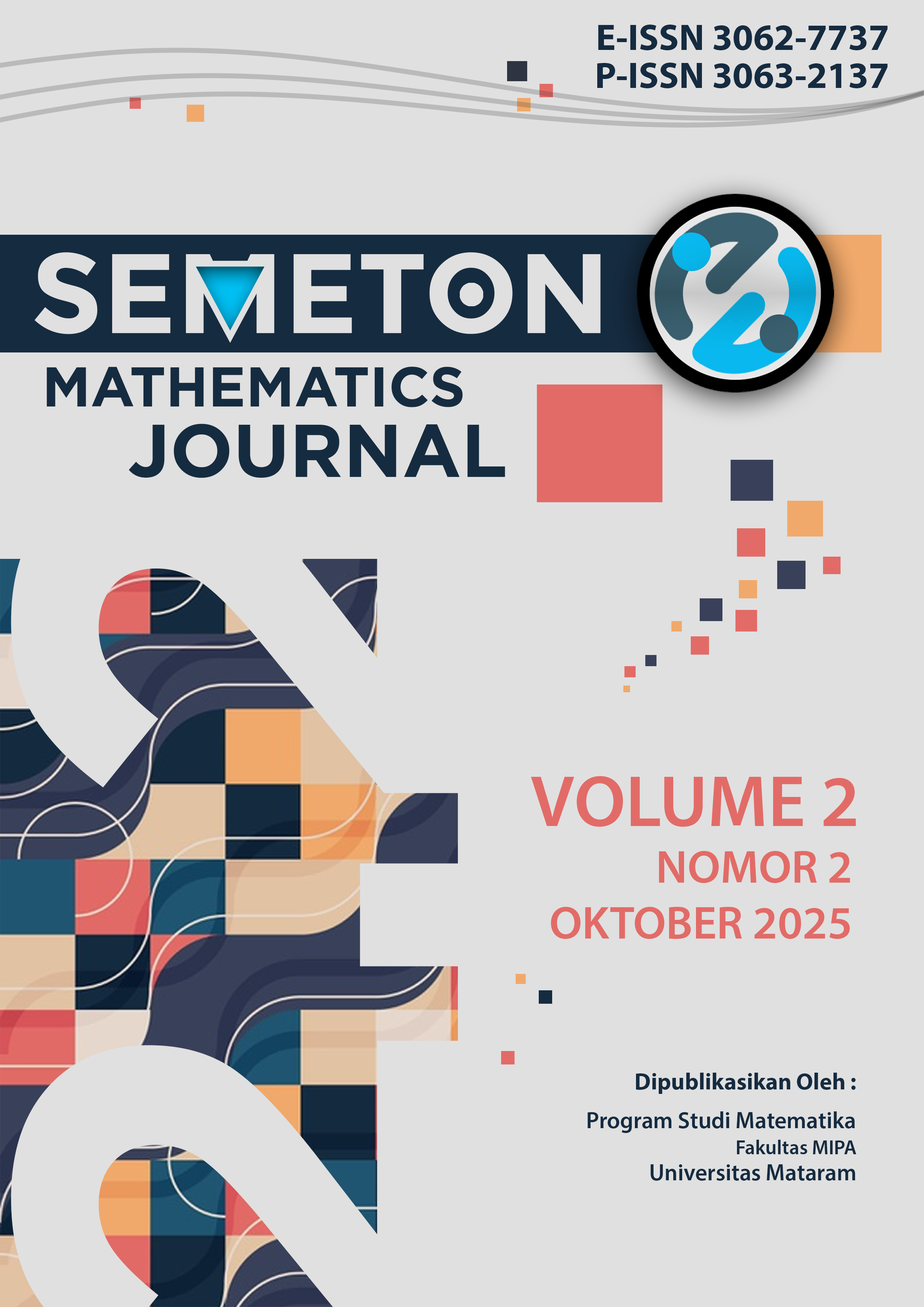Peramalan Produksi Kedelai di Provinsi Nusa Tenggara Barat menggunakan Model Grey-Markov (1,1)
DOI:
https://doi.org/10.29303/semeton.v2i2.314Keywords:
Grey-Markov model (1,1), West Nusa Tenggara, Forecasting , Soybean productionAbstract
The continuously increasing soybean imports are caused by the imblance in domestic soybean produstion. This indicates that nationalsoybean self-sufficiensy has not yet been achieved, as many soybean farmlands have now been converted to other commodities. This condition occurs in West Nusa Tenggara, Which is one of Indonesia’s nationalsoybean production centers. To understand future soybean production conditions, forecasting future soybean production in West Nusa Tenggara province using the grey_markov (1, 1) model. This model only requires minimal data for forecasting, which aligns with the limites research data available. The data used in this study is soybean production data from West Nusa Tenggara province. The research results show that in 2022, soybean production in West Nusa Tenggara province will decline, with the prediction demonstrating good accuracy as indicated by a MAPE value of 15.75%.References
Astawan, Sehat Bersama Aneka Sehat Pangan Alami. Solo: Tiga Serangkai, 2004.
FAO, “Fao Statistical Year book 2013,” Crop Production Statistics, Food and Agriculture Organization : Rome, vol. 1, 2013.
R. Rustiana and A. Suriadi, “Peningkatan Produksi Kedelai Melalui Pengembangan Tumpang sari Pada Berbagai Agroekosistem di NTB,” NTB, 2020.
D. Julong, “Control Problems of Grey System,” System and Control Letters , vol. 1, no. 5, 1982. https://doi.org/10.1016/S0167-6911(82)80025-X
S. W. S. Latipah, “Peramalan Pendapatan Asli Daerah Provinsi Kalimantan Timur Menggunakan Model Grey-Markov (1,1),” Jambura Journal of Mathematics, vol. 1, Jul. 2019, http://dx.doi.org/10.34312%2Fjjom.v1i2.2347.
A. Ahdika, “Model Grey (1,1) dan Grey-Markov pada Peramalan Realisasi Penerimaan Negara,” Jurnal Fourier, vol. 7, no. 1, pp. 1–12, Apr. 2018, 10.14421/fourier.2018.71.1-12.
X. Che, “Application of Improved Grey Model in Medium and Long Term Load Forecasting,” in IOP Conference Series: Earth and Environmental Science, Institute of Physics Publishing, Mar. 2018. https://doi.org/10.1088/1755-1315/128/1/012010.
S. Liu and J. Yi-Lin Forrest, “Introduction 1.1 Scientific Background for the Appearance of Grey Systems Theory,” Jan. 2006. https://www.researchgate.net/publication/270902483
A. Kazemi, M. Modarres, and Mr. Mehregan, “Energy Demand Forecast of Iran’s Industrial Sector Using Markov Chain Grey Model,” 2013.
I. Sungkawa and R. T. Megasari, “Penerapan Ukuran Ketepatan Nilai Ramalan Data Deret Waktu Dalam Seleksi Model Peramalan Volume Penjualan Pt Satriamandiri Citramulia,” 2011.
Downloads
Published
How to Cite
Issue
Section
License

This work is licensed under a Creative Commons Attribution-ShareAlike 4.0 International License.



